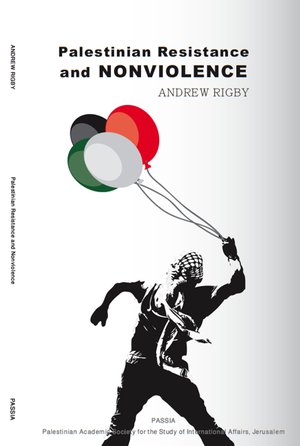Palestinian Resistance and NONVIOLENCE
This research work looks at the various phases of Palestinian resistance starting with the Palestinian protests against Jewish migration and subsequent Zionist expansion under the Ottomans, then elaborating on the years of the British Mandate, the period of partition, and the lost years of the 1950s, and further examining the emergence of the PLO, Israel’s occupation of the West Bank and Gaza, the first Intifada, the Oslo Process, the Second Intifada, and the growth of the Palestinian Boycott, Divestment and Sanctions (BDS) campaign since 2005. The author thereby outlines the different strategies and practices of resistance pursued by the Palestinians (focusing on those inside the occupied territories) over the years, and shows that these followed primarily nonviolent means – maintaining steadfastness and hope in various ways.
Overview
Some twenty years ago I wrote a book examining the ‘first’ Palestinian intifada as a form of civilian-based unarmed resistance. Draft chapters of that book had previously been published as monographs by PASSIA, which was my ‘home’ during the period of the research. That work was informed by my life-long interest and commitment to nonviolent modes of resistance and change – a commitment that has not weakened in the intervening years.
But something significant has changed. The years of the first intifada was a time of hope. I can remember sitting down with Palestinian friends discussing whether or not there would be prisons in the new Palestinian state that seemed about to be born. I smile at the memory and our ‘utopian idealism’. But a large part of me is also pained by the loss of that hope, a hope that grew out of the civilian uprising that challenged the Israeli occupation on the ground in the West Bank and Gaza Strip and internationally.
I started this study expecting to uncover a ‘hidden history’ of Palestinian nonviolent resistance to set against the crude culture and rhetoric of violence that has been the public face of so much of Palestinian resistance. And it is clear that during each phase of Palestinian resistance to Jewish migration and subsequent Zionist expansion and occupation, the majority of people resisted primarily by nonviolent means – maintaining steadfastness and hope in various ways. But except for the period of the first intifada (1987-91) such nonviolent modes of resistance were subordinated to other means of struggle, particularly those characterised by the rhetoric and practice of violence.
Finally – some apologies. I am very aware that I have not covered the different modes of resistance pursued by the Palestinian citizens of Israel and by Palestinian refugee communities in the Arab world in the years since 1948. I have focused primarily on the strategies and practices of Palestinians inside the occupied territories.
Consequently this is very much a work in progress. There is much research that needs to be done in order to develop a fuller understanding of the myriad ways in which Palestinians have pursued their struggle for individual and collective rights by nonviolent means. In particular there is a need for research on what James Scott has termed the ‘hidden transcripts’ of resistance, the ways in which Palestinian people who have been ‘hidden from history’, living their lives subordinated under patterns of domination, have utilised ‘off-stage’ spaces to give expression to various modes of dissent as a means of preserving temporary zones of relative autonomy and freedom in their everyday life.

